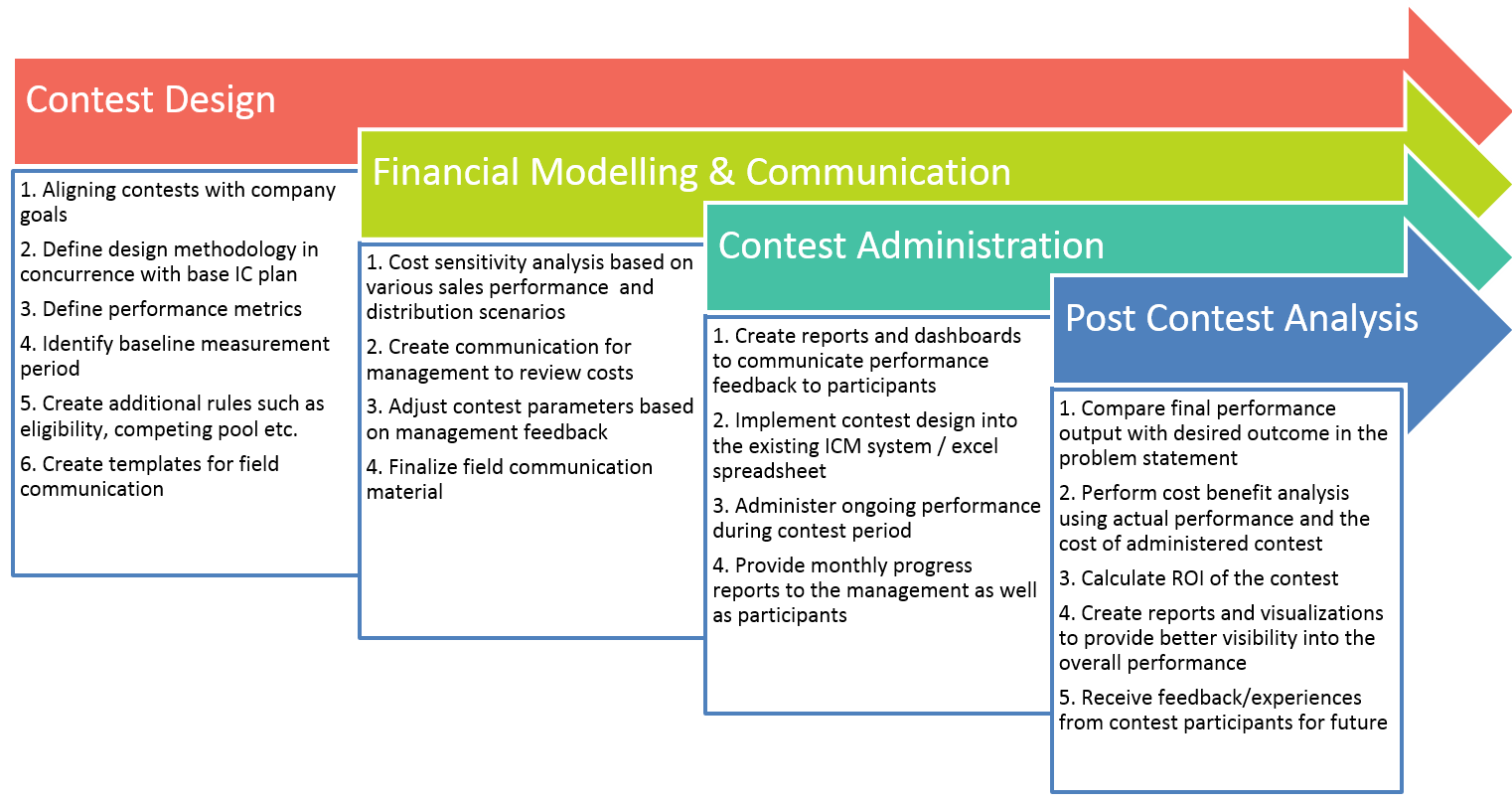13 ways to reshape sales compensation plans during a pandemic Amit Jain September 23, 2020

2020 is turning out to be one of the worst years in recent history, with a significant impact on global economic health. The primary reason for this has been restrictions imposed to contain the spread of Corona pandemic while there have also been several localized natural disasters in different geographical areas that have further worsened the situation.
With COVID-19, the sales environment across industries has shifted to virtual selling resulting in a lack of in-person access and physical time. Organizations have tried to take this problem head-on and have implemented several digital platforms and channels to continue to engage stakeholders despite physical restrictions. Managing, motivating, and ensuring remote sales forces are effectively engaged during such a period has become challenging.
Organizations are actively working towards assessing the level of impact on their business while working towards short-term and long-term measures to adapt to the “new normal”. Incentives make up a significant portion of total compensation, and reduced sales due to unforeseen circumstances may see a huge drop in total payout leading to a risk of lack of engagement and attrition of high performers. This has forced sales operations teams to refine their sales performance management approaches, adding a new dimension to the overall complexity of variable/sales compensation management. The balance between fairness to sales reps, budgetary constraints, and revenue performance is constantly sought. Moreover, another level of complexity arises from the fact that different parts of the countries follow significantly different infection and recovery trajectories, resulting in the further need for local adjustments.
Sales compensation plan design is already a complex process because of a need to consider several parameters such as geographically diverse business environments, company culture, labour regulations, market constraints and innovation, customer engagement and selling process, level of impact and control on sales, data availability etc. The desired plan adjustments further force organizations to rethink their IC philosophy without compromising on key plan design principles.
Following are some key sales compensation plan design strategies and adjustment ideas organizations can deploy in case of such unforeseen situations to ensure that representatives continue to be motivated and engaged while preparing themselves for future growth. These options can be bundled based on specific needs and can be implemented for results in the short-term as well as long-term basis:
1- Pay Target or Better
Pay target sales compensation to affected sales, service, and support representatives for the most impacted period where-in they are not able to achieve their targets. Organizations can also choose to go beyond and allow high-performing reps to earn more if they manage to beat their targets despite prevalent economic turmoil. This reinforces organizations’ commitment towards outcomes without compromising on their employees’ well-being and keeps them motivated and away from any distractions
2- Guarantee / Draws
Pay a fixed % of target sales incentive, guarantee amount or a non-recoverable draw for the impacted period to strike a balance between field motivation and fiscal responsibility. Organizations can also choose to go for recoverable draws, where-in incentives are paid upfront and adjusted once sales have picked up. Like “Pay Target”, guarantees and draws instil a sense of security and keep the salesforce motivated and away from any distractions
3- Performance Period Adjustment
Increase the performance period timeframe to ensure that the sales representatives get an opportunity to make up for the lost opportunities by putting in additional efforts in the latter part of the performance period. In certain cases, organizations may decide to reduce the performance period to contain the impact within a shorter period
4- Revising Commission Rates & Introduction of Payment Accelerators & Kickers
Organizations can choose to temporarily increase commission rates or positively revise kickers and accelerators (telecom and insurance) to boost sales representatives’ earnings. On the lower side of the spectrum, they can choose to remove or ease decelerators to ensure performance earnings are positively reinforced for sales and deals closed during the impacted period
5- Re-balancing KPI metrics & weights
Reviewing KPI weights and balancing them out to align with emerging business needs, like an increased focus on customer centricity. Customer centricity and customer success help organizations and particularly sales representatives, to temporarily move away from the product mindset and focus more on customer well-being which in the process helps in developing long-term relationships
6- Goal Adjustments
Provide relief by adjusting quotas to account for activity and market challenges. These adjustments also need to be tracked for future goal setting to ensure that appropriate baseline adjustments are made once the business gets back to normal. Organizations can also choose for goal adjustments specifically over guarantees and other direct pay adjustments as these are pro-rated and aligned with actual performance impact at the individual level. This also helps from an annual computation standpoint as organizations are saved of any true-ups, retro calculations, and plan updates to account for the impacted period
7- MBO type plan
Pay incentives based on specific activities instead of outcomes to keep the engagement high while ensuring that existing relationships are being maintained remotely and sales pipelines are being created for the future
8- Team Performance
Explore options of teaming up sales forces across product/business portfolios to encourage and explore cross-selling and up-selling opportunities
9- Relative Performance
Index territory or individual performance within a broader impacted area or complete market to factor in local variations as a part of rationalization of performance
10- Payout Curve Modifications
Lower performance threshold or ease out qualifier metrics like past dues, retro collections (manufacturing), and removal of penalties (channel distribution) to allow reps to be “in the money” at lower performance levels (know more about payout curve designs)
11- Pay Mix Change
Change the pay mix to reduce the proportion of incentives in the total compensation. While this is a complex and long-term solution, organizations can leverage the opportunity of looking at the overall compensation structure and modifying it to align with changing selling environment in the longer term
12- SPIFFs
Give higher leverage to spiffs & seasonal contests. Avoid including peak COVID-impacted performance during calculations. This allows reps to make up the lost opportunity cost by cashing in more during festive seasons or seasonal sale spikes
13- Annual Trip/President’s Club
Provide a cash-out option for an annual trip or at least postpone it indefinitely unless the situation is more conducive to travel.
To summarize, organizations are evaluating the situation based on their product portfolio, selling environment, sales process complexity, and level of impact and are deploying different adjustment strategies. Organizations are trying to leverage and analyze data across periods to better understand the overall impact and utilise this information to take fair decisions. We do believe that sales incentive plans can be designed to be reasonably stable, motivating and fiscally responsible. There are inherent counteracting pressures between these design principles, with significant complexities being added due to such unforeseen situations but with the help of comprehensive data analysis and leveraging market intelligence, appropriate steps can be taken, which ensures that sales incentive plans continue to be motivating and engaging.
Please feel free to reach out directly to us at Incentius to know more about how you can leverage our advanced analytical expertise to take data-driven decisions and stay ahead of the curve.





